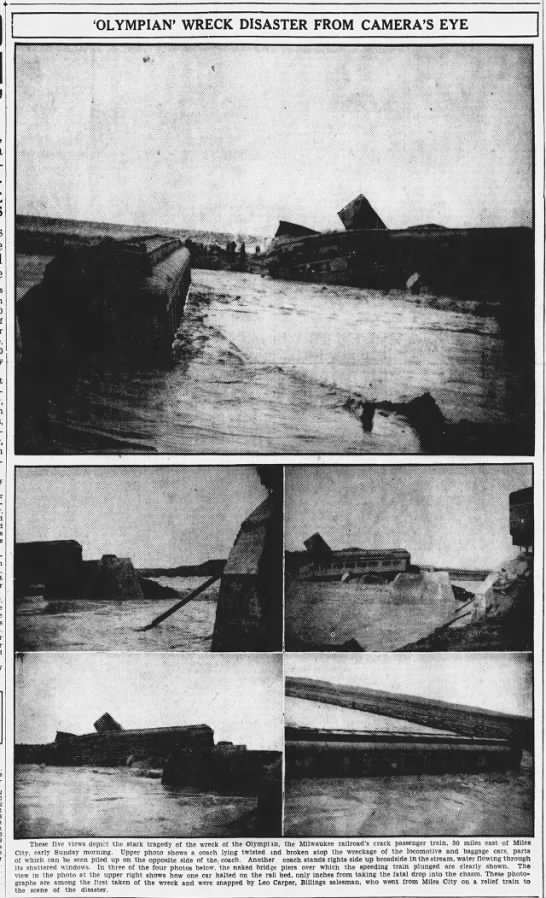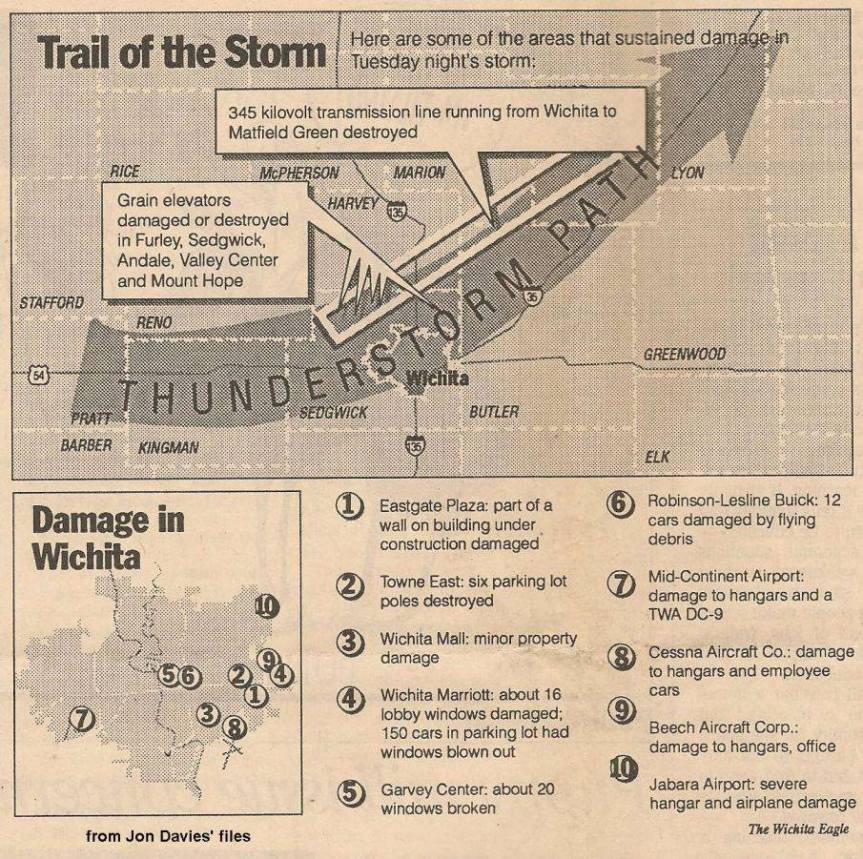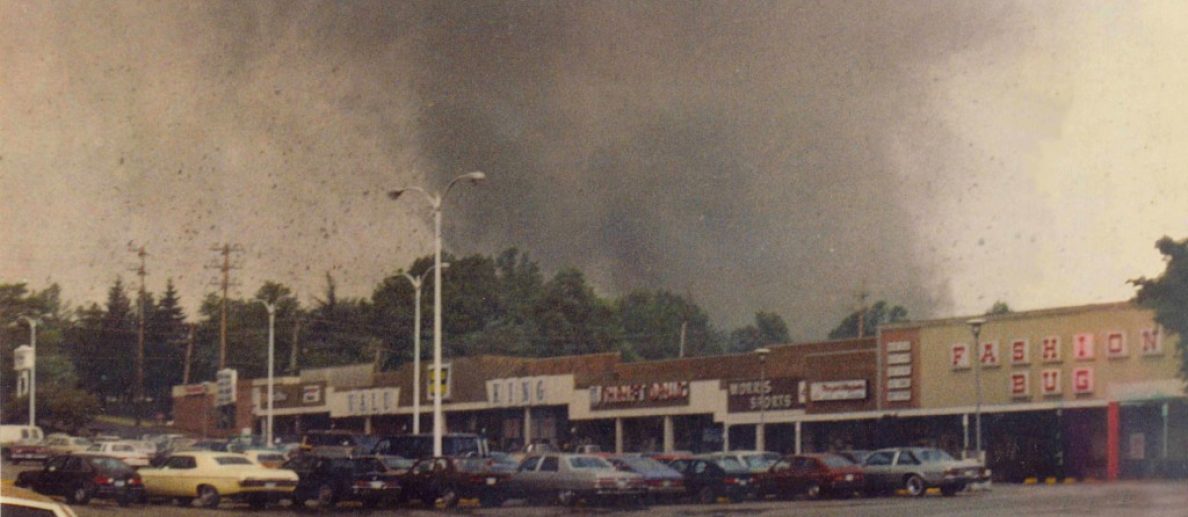Weather History – June 19
Local and Regional Events:
June 19, 1894:
A tornado moved NNE, passing 12 miles northwest of Bowdle, ending in extreme southeastern Campbell County. A child was killed, and the mother and four other children were severely injured. A man was killed in another home, and his wife was injured. The estimated F3 tornado damaged or destroyed fourteen homes. Clothes were said to be torn to shreds and scattered for miles.
June 19, 1931:
A tornado moved east from just south of St. Lawrence, passing south of Wessington. Buildings were destroyed on eight farms, and two farms were said to be wiped out, house and all. A woman was injured as she tried to rescue chickens. Cattle, horses, and over 100 hogs were killed. The tornado had an estimated strength of an F3.
June 19, 2013:
Slow-moving thunderstorms brought some large hail, heavy rains, and flash flooding to parts of northeast South Dakota. One thunderstorm produced quarter hail and winds over 50 mph, which caused significant damage to a bean field and damaged the siding of the house south of Wilmot in Roberts County. Several roads in Wilmot had water running over them for several hours. Over three inches of rain caused water to go over a part of Highway 123 south of Wilmot. The heavy rain of three to four inches brought many flooded roads in and around Veblen in Marshall County.
U.S.A and Global Events for June 19:
June 19, 1794: A violent tornado commenced west of the Hudson River in New York. The tornado traveled through Poughkeepsie, then crossed the border into Connecticut, where it went through New Milford, Waterbury, North Haven, and Branford. It then continued into Long Island Sound. The tornado did extensive damage, and the funnel was reported by one observer to look like the “aurora borealis.”

June 19, 1835: A tornado went through New Brunswick, NJ, killing 5 people. The tornado is the deadliest in New Jersey. It was also the first tornado tracked studied by scientists.
#OTD in 1835, a tornado went through New Brunswick, NJ. 1st tornado track studied by scientists. @USTornadoes ->https://t.co/rYm57MaXF4 pic.twitter.com/9nltzTfZyX
— WX History (@weather_history) June 19, 2017
https://platform.twitter.com/widgets.js
June 19, 1938: A flash flood washed out a railroad bridge on the Custer Creek near Terry in Prairie County Montana. The Milwaukee railroad’s Olympian train reached the washed-out bridge shortly after midnight, plunging into the swollen waters below. Nearly 50 people were killed and many more were injured. Click HERE for more information from the Billings Gazette via archive.org

June 19, 1972: A look back at Hurricane Agnes. Click HERE for more information from the Alabama Weather Blog.
A look back on the 45th anniversary of Hurricane “Agnes.” pic.twitter.com/8iIxrjXN4j
— NWS MARFC (@NWSMARFC) June 19, 2017
https://platform.twitter.com/widgets.js
June 19, 1990: Powerful winds hit Wichita, Kansas, during the late evening hours. Its 116 mph winds reached topple trees, rip apart small buildings, and knock down over 1,000 power poles. The storm causes more than $50 million in damage. Click HERE for more information from the NWS Office in Wichita, Kansas.

June 19, 2004: Annette Island, Alaska, set an all-time record high temperature of 93 degrees. Since record-keeping began in 1941, Annette Island has seen 90-degree temperatures four times.
June 19, 2013: A large waterspout was seen at Grand Isle, Louisiana.
#otd 4 years ago 6-19-13, this large photogenic #Waterspout #Tornado was spotted at #GrandIsle # Louisiana #LA #LAwx #wxhistory pic.twitter.com/EQXeV1Fm5r
— Travels & Chases (@TRAVELSnCHASES) June 19, 2017
https://platform.twitter.com/widgets.js
June 19, 2014: A waterspout came ashore as a tornado just east of Istanbul, Turkey. The tornado struck the neighborhoods of Tuzla and Kocaeli.
#otd 3 yrs ago 19 Jun2014 a #Waterspout came ashore as a #Tornado just E of #Istanbul #Turkey & hit the neighborhoods of #Tuzla & #Kocaeli pic.twitter.com/LhW4I4QfI6
— Travels & Chases (@TRAVELSnCHASES) June 19, 2017
https://platform.twitter.com/widgets.js
Click HERE for more This Day in Weather History from the Southeast Regional Climate Center.
